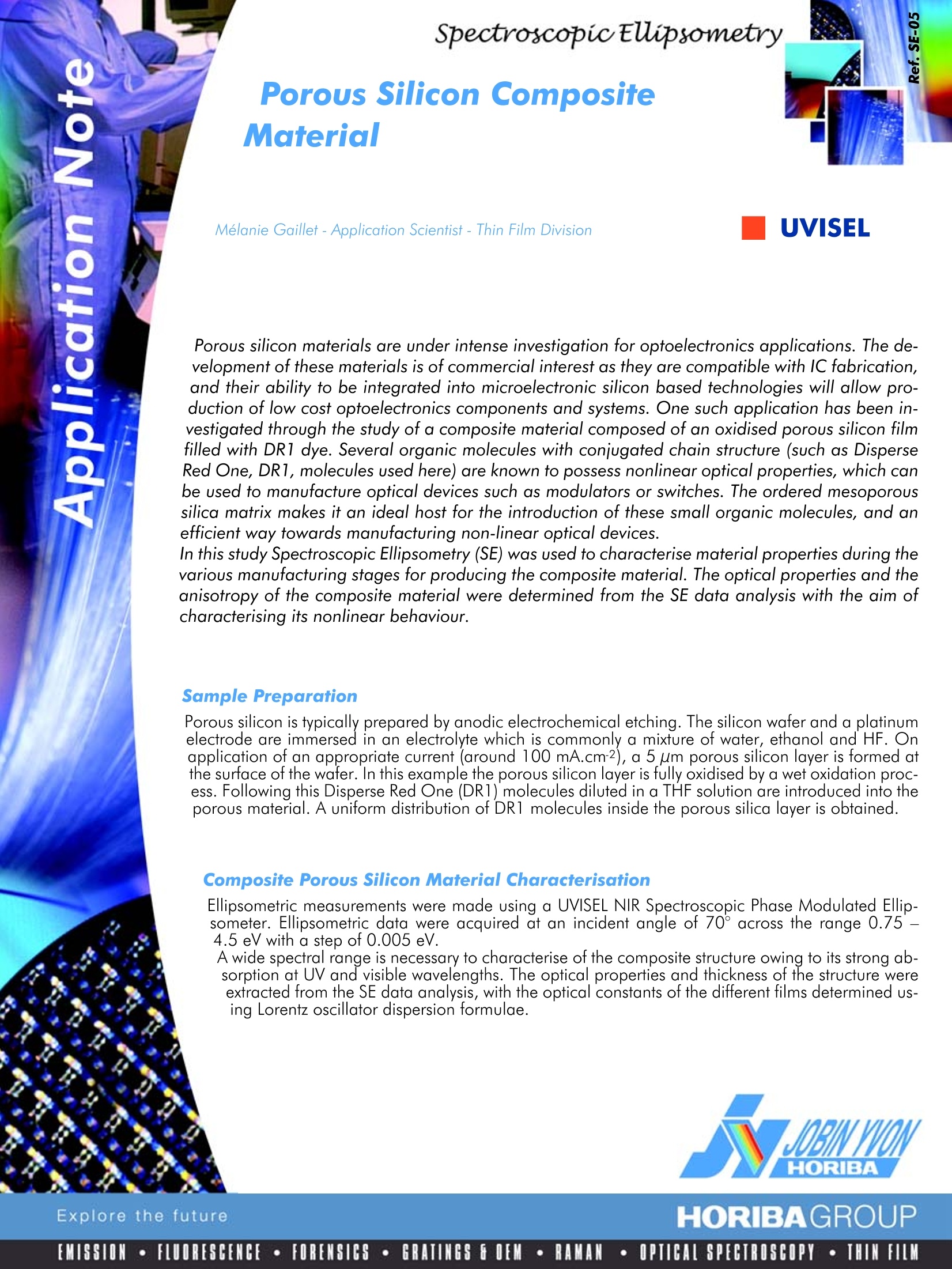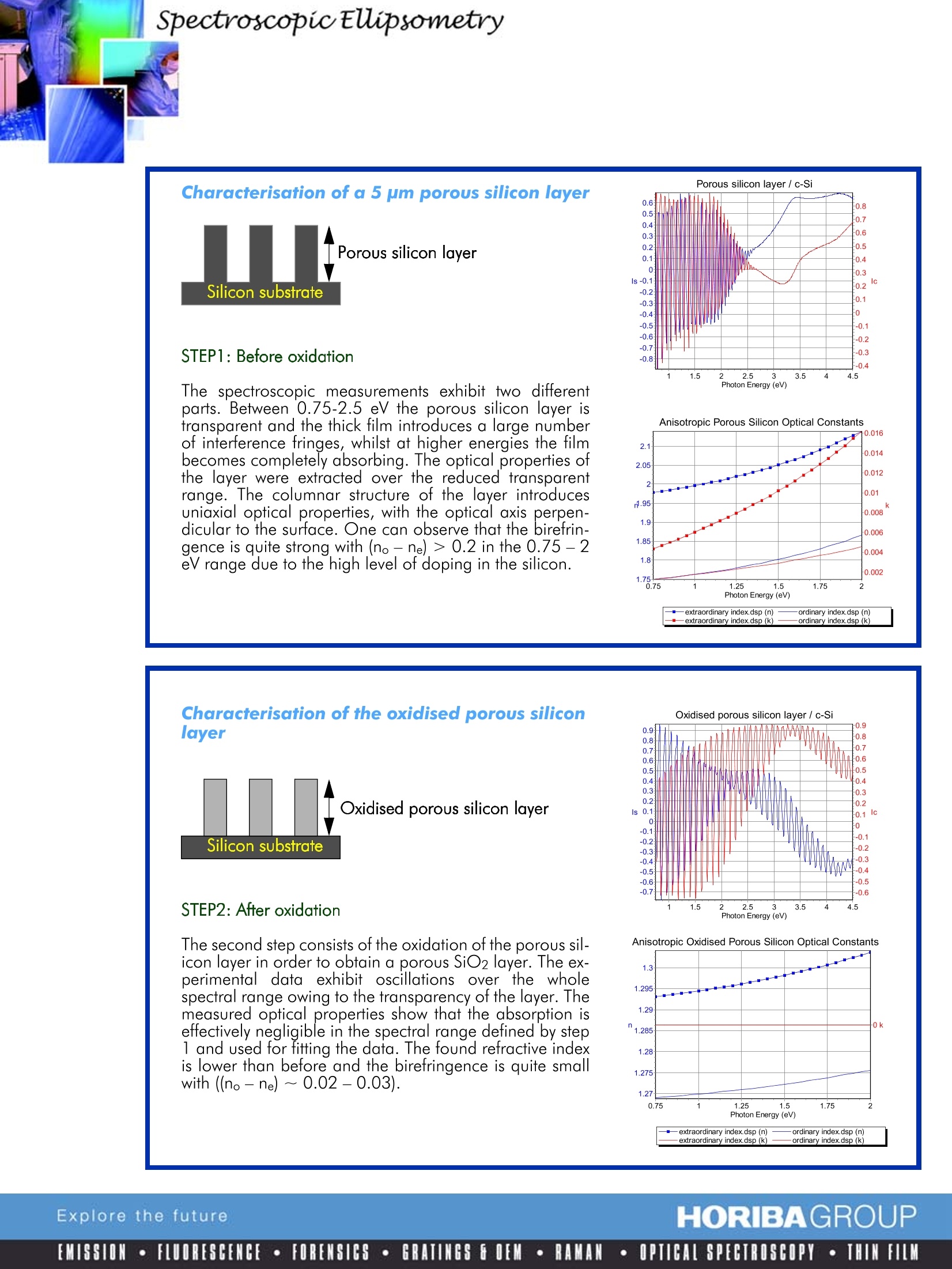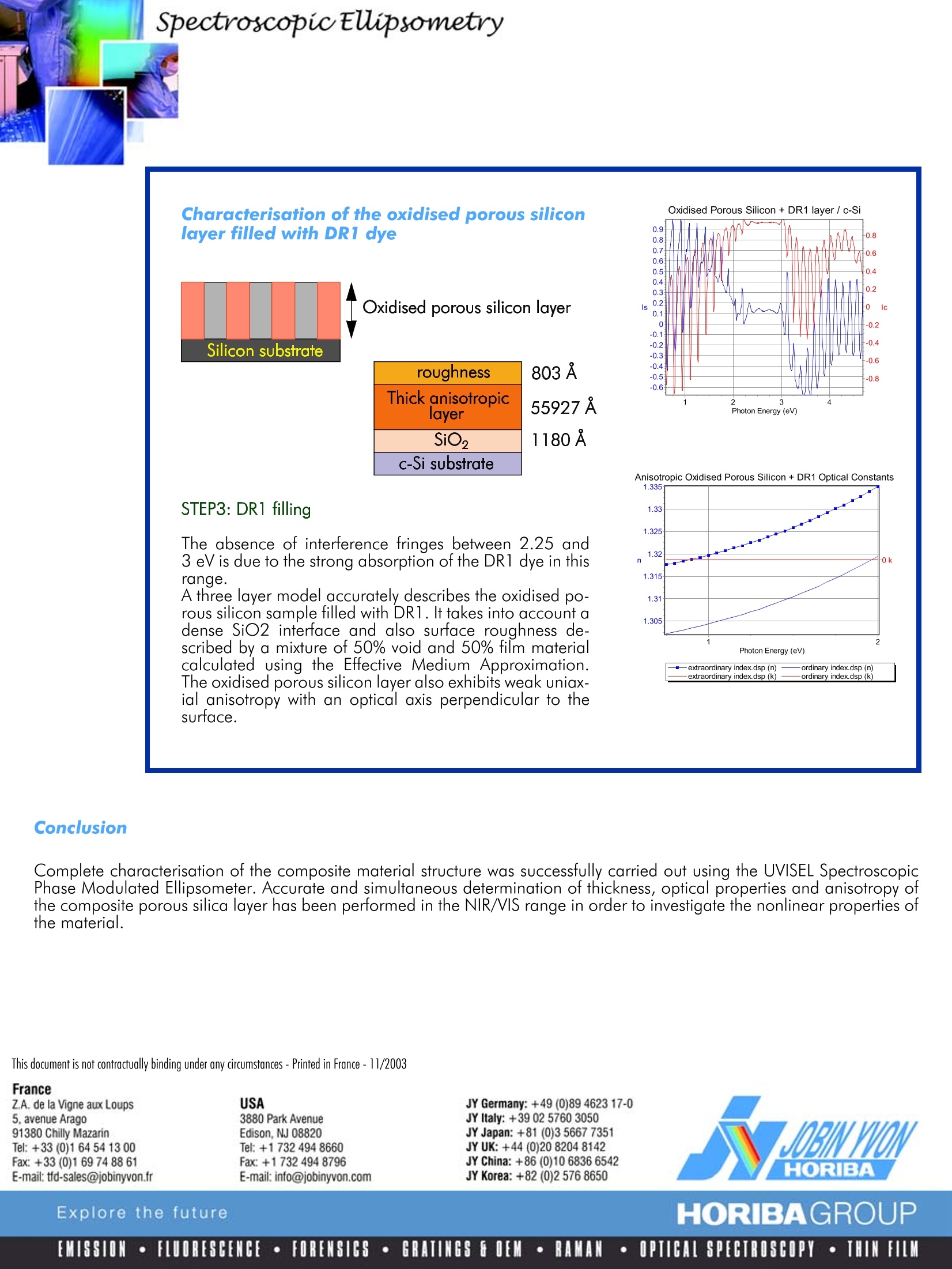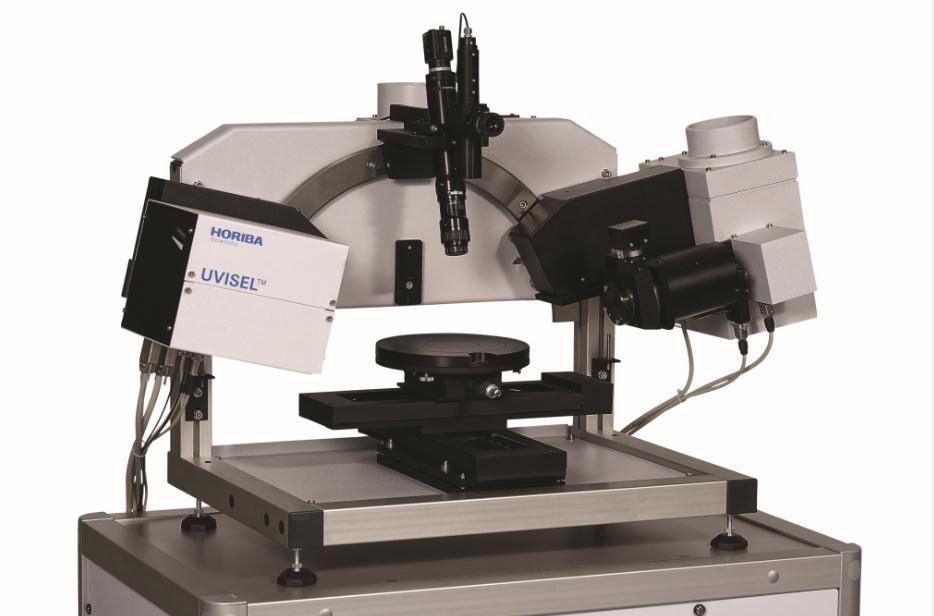方案详情
文
Complete characterisation of the composite material structure was successfully carried out using the UVISEL Spectroscopic Phase Modulated Ellipsometer. Accurate and simultaneous determination of thickness, optical properties and anisotropy of the composite porous silica layer has been performed in the NIR/VIS range in order to investigate the nonlinear properties of the material.
方案详情

SpectroycopicElipsometry Porous Silicon CompositeMaterial Melanie Gaillet - Application Scientist - Thin Film Division UVISEL Porous silicon materials are under intense investigation for optoelectronics applications. The de-velopment of these materials is of commercial interest as they are compatible with IC fabrication,and their ability to be integrated into microelectronic silicon based technologies will allow pro-duction of low cost optoelectronics components and systems. One such application has been in-vestigated through the study of a composite material composed of an oxidised porous silicon filmfilled with DR1 dye. Several organic molecules with conjugated chain structure (such as DisperseRed One, DR1, molecules used here) are known to possess nonlinear optical properties, which canbe used to manufacture optical devices such as modulators or switches. The ordered mesoporoussilica matrix makes it an ideal host for the introduction of these small organic molecules, and anefficient way towards manufacturing non-linear optical devices. In this study Spectroscopic Ellipsometry (SE) was used to characterise material properties during thevarious manufacturing stages for producing the composite material. The optical properties and theanisotropy of the composite material were determined from the SE data analysis with the aim ofcharacterising its nonlinear behaviour. Sample Preparation Porous silicon is typically prepared by anodic electrochemical etching. The silicon wafer and a platinumelectrode are immersed in an electrolyte which is commonly a mixture ot water, ethanol and HF. Onapplication of an appropriate current (around 100 mA.cm2),a 5 um porous silicon layer is formed atthe surface of the wafer. In this example the porous silicon layer is fully oxidised by a wet oxidation proc-ess. Following this Disperse Red One (DR1) molecules diluted in a THF solution are introduced into theporous material. A uniform distribution of DR1 molecules inside the porous silica layer is obtained. Composite Porous Silicon Material Characterisation Ellipsometric measurements were made using a UVISEL NIR Spectroscopic Phase Modulated Ellip-someter. Ellipsometric data were acquired at an incident angle of 70°across the range 0.75 -4.5 eV with a step of 0.005 eV. A wide spectral range is necessary to characterise of the composite structure owing to its strong ab-sorption at UV and visible wavelengths. The optical properties and thickness of the structure wereextracted from the SE data analysis, with the optical constants of the different films determined us-ing Lorentz oscillator dispersion formulae. HORIBAGROUP Characterisation of a 5 pm porous silicon layer Porous silicon layer STEP1: Before oxidation The spectroscopic measurements exhibit two differentparts. Between 0.75-2.5 eV the porous silicon layer istransparent and the thick film introduces a large numberof interference fringes, whilst at higher energies the filmbecomes completely absorbing. The optical properties ofthe layer were extracted over the reduced transparentrange. The columnar structure of the layer introducesuniaxial optical properties, with the optical axis perpen-dicular to the surface. One can observe that the birefrin-gence is quite strong with (no-ne) > 0.2 in the 0.75-2eV range due to the high level of doping in the silicon. SpectroscopicEUipsometry Characterisation of the oxidised porous siliconlayer filled with DR1 dye Oxidised porous silicon layer STEP3: DR1 filling The absence of interference fringes between 2.25 and3 eV is due to the strong absorption of the DR1 dye in thisrange. A three layer model accurately describes the oxidised po-rous silicon sample filled with DR1. It takes into account adense SiO2 interface and also surface roughness de-scribed by a mixture of 50% void and 50% film materialcalculated using the Effective Medium Approximation.The oxidised porous silicon layer also exhibits weak uniax-ial anisotropy with an optical axis perpendicular to thesurtace. 1.335f Explore the futureEMISSION·FLUORESCENCE· FORENSICS GRATINGS F OEM·RAMAN·OPIICAL SPECTROSCOPY ·THIN FILM Complete characterisation of the composite material structure was successfully carried out using the UVISEL Spectroscopic Phase Modulated Ellipsometer. Accurate and simultaneous determination of thickness, optical properties and anisotropy of the composite porous silica layer has been performed in the NIR/VIS range in order to investigate the nonlinear properties of the material.
确定



还剩1页未读,是否继续阅读?
HORIBA(中国)为您提供《介孔硅复合材料中厚度,光学常数,各向异性检测方案(椭偏仪)》,该方案主要用于其它中厚度,光学常数,各向异性检测,参考标准--,《介孔硅复合材料中厚度,光学常数,各向异性检测方案(椭偏仪)》用到的仪器有HORIBA UVISEL Plus研究级经典型椭偏仪
相关方案
更多
该厂商其他方案
更多










